InfiRay recently contacted me to review their new smartphone infrared camera, called the P2 Pro.
The Basics
This camera is a direct competitor to the Seek Thermal CompactPRO camera or the FLIR One Pro. It’s a tiny infrared camera that plugs into your phone and retails for $299. They tell me it’s the world’s smallest infrared camera, weighing in at less than 9 grams.
It’s about half the size of the CompactPRO (pictured below), and way smaller than the FLIR One Pro.
It comes in a cute little pouch and includes a USB-C to USB-C cable with one female end and one male end. If you order the camera with a magnetic macro lens, you also get a dust cover for the lens.
Unfortunately, the USB plug on the camera isn’t long enough to fit into a phone if you have a case… at least, it doesn’t work with my case.
I had to remove my phone case for the camera to work with my phone.
I could also use the included USB-C extension cable, but then you definitely need two hands to operate it. However, I think it’s a good idea to use two hands while operating any mobile phone IR camera. If you accidentally drop your phone with the IR camera attached, you’ll probably destroy your charging port.
Software
I initially had some trouble setting up the software. It installed fine on my phone, but then I got an error message saying I needed to turn on the “OTG function” for my phone. I spent a while googling this and trying a bunch of solutions, and nothing seemed to work. I was going to send the company an email asking why it wasn’t working but then tried it again the next day, and it magically worked. I’ve since figured out that launching the software before plugging in the camera will always give me this error message.
The software allows you to select from a variety of color palates, do a live picture-in-picture, show temperature readings for up to three locations, display the temperature scale on the side of the screen, remove the watermark (love this!), record videos, and do a handful of other things similar to other infrared cameras. It’s perfectly adequate.
Resolution
The P2 Pro has a resolution of 256×192, which is ok, and a thermal sensitivity of <40mK, which is great. As I’ve said in the past, resolution isn’t everything. Thermal sensitivity is just as important, and the lower the number, the better. For comparison, the FLIR ONE Pro is rated at 150mK (not good), and the CompactPro doesn’t publish this data.
Macro Lens
The macro lens is good for close-up images. The two images below show a comparison of a charging cable; without the macro lens, the image is pretty much worthless.
While effective, I don’t think there is any use for a macro lens for home inspectors. I’ve never had a situation where I needed a macro lens.
Drawbacks
The color palate shows up sideways if you hold the camera to take landscape images. The logo appears sideways too, but the spot temperature automatically rotates. So the camera knows you’re holding it sideways, and it changes some of the screen display, but not all of it. Why?
The software is a bit buggy, occasionally displaying a “snowy” screen. Unplugging the camera and plugging it back in usually fixes this.
Also, it doesn’t like to record images of really hot stuff. It has some kind of built-in lens burn protection, preventing infrared images from displaying. I discovered this while writing last week’s blog post about gas fireplaces:
I had to use my FLIR E6 camera to capture this image for my blog post:
And finally, the temperature range palate on the side of the images has to be manually turned on every time you restart the software. It would be nice if this could be corrected, so it would remember your last settings.
The good news is that all of these drawbacks could likely be fixed in a single software update; they’re really more knocks against the software than the actual camera.
Image comparisons
I like to compare images to my FLIR E6 camera, which has been the standard infrared camera in my home inspection company for a long time. While the E6 offers image blending, the P2 Pro does not, so I turned off the MSX feature on my E6 to make sure I’m comparing apples to apples. The P2 Pro is on the left, and the FLIR E6 is on the right.
Conclusion
The P2 Pro clearly produces better images and with a wider field of view to boot. For occasional diagnostic use, this is a fantastic little powerhouse of a camera. It won’t replace any of the cameras we use during home inspections because we prefer to use stand-alone cameras, but this would make for a fantastic backup camera.

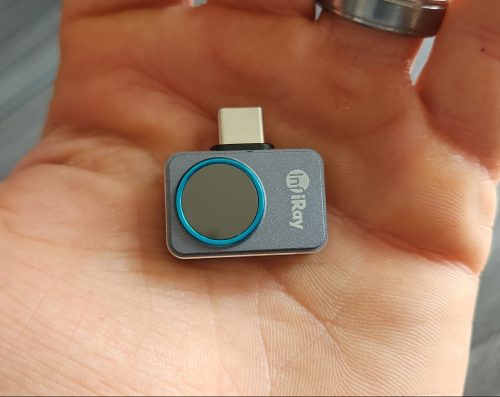
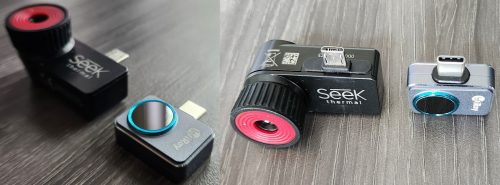
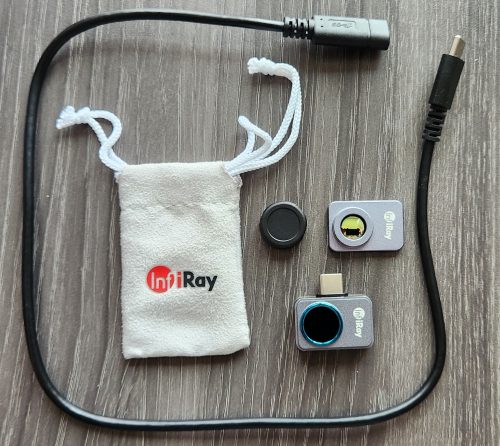
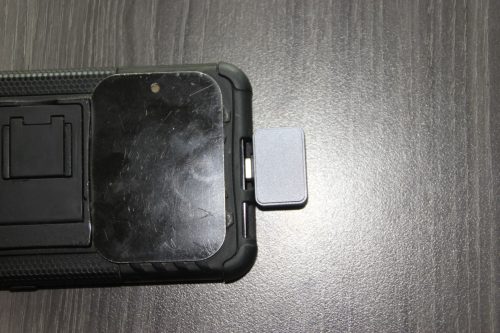
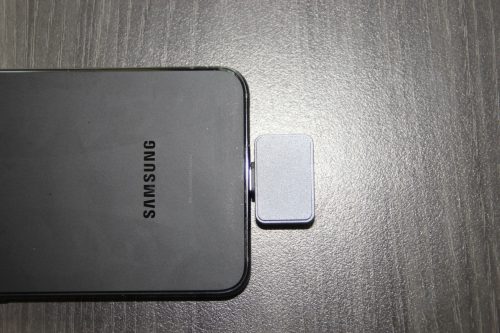
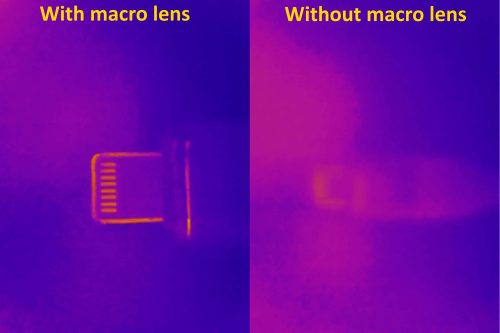
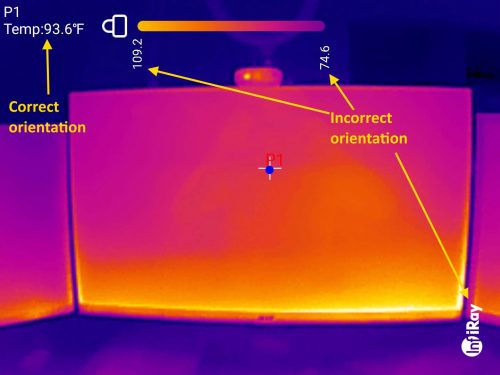

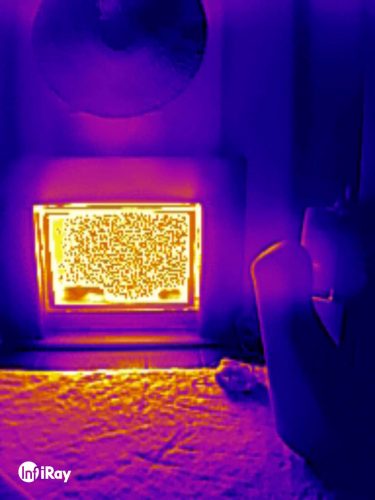
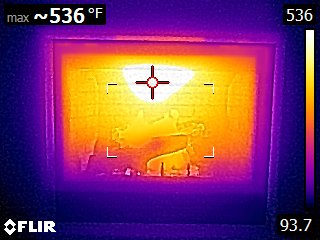
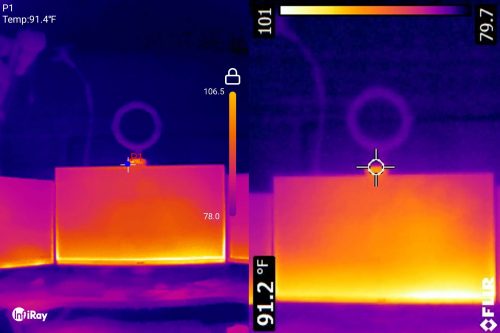

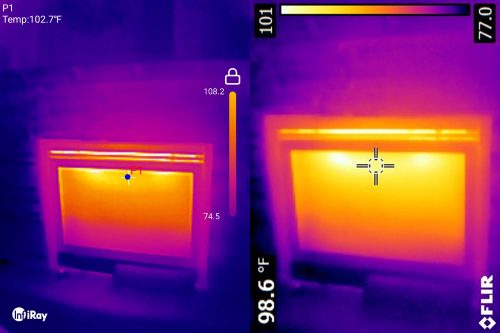
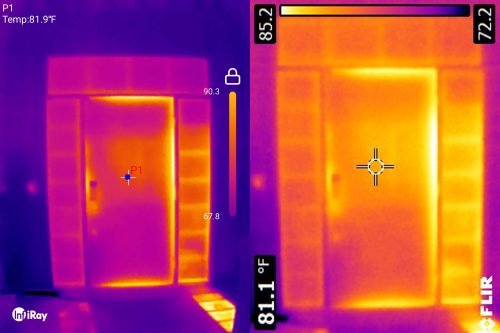


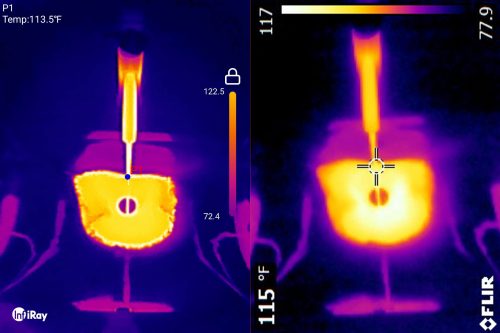
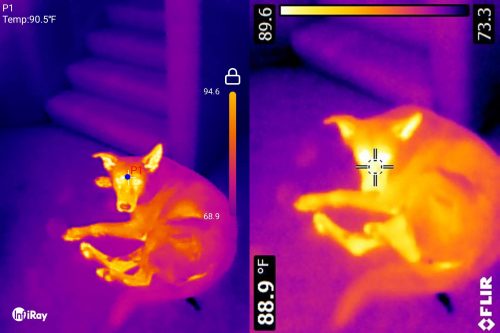
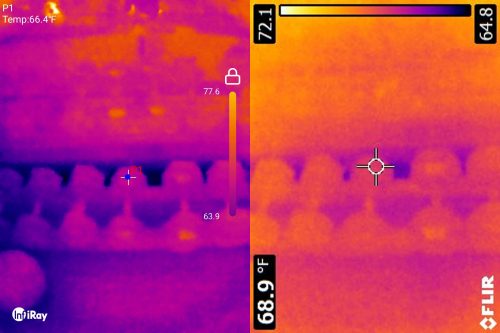
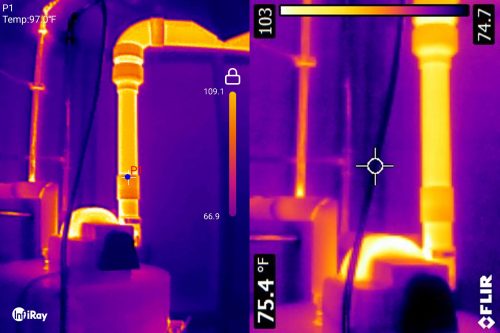
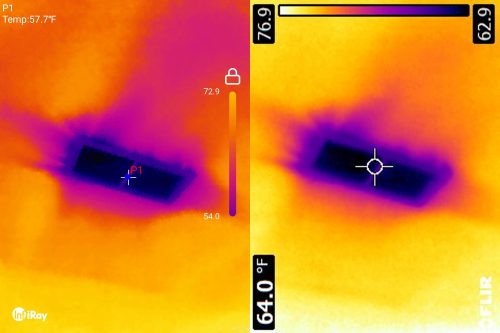
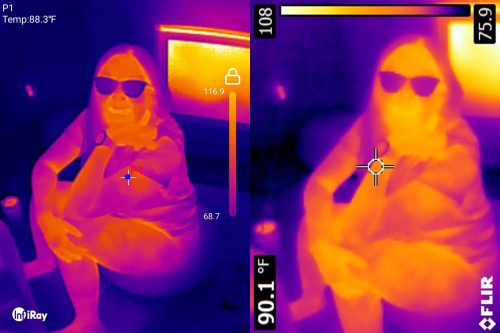
Yero Dermenjian
June 13, 2023, 11:20 am
The image quality looks good, and it’s actually a pretty good price. Do these plug-in devices, that connect to a phone and require an app through an app store, stand the test of time as phones change? Are they still usable (software supported on newer phones) 1/2/3 years from now?
I see you have a bunch of great articles reviewing infrared cameras from the perspective of a home inspectors (makes sense, since you are one). Any recommendation on an infrared camera for the homeowner? Someone that will use it less frequently, and where price becomes a bigger differentiator?
Thanks!
Reuben Saltzman
June 13, 2023, 11:43 am
Hi Yero,
Unfortunately, I don’t have any data to share with you about these smaller IR cameras standing the test of time. I don’t use them on a day-to-day basis, so I don’t know how they hold up.
I did try pulling out my Seek Thermal Compact Pro camera to do a head-to-head comparison with the P2 Pro for this blog post, but it wouldn’t work. I couldn’t get my software to recognize the camera any longer. So there’s certainly a chance that your camera will quit working or become obsolete in a matter of years. At that point, you’ll have to buy another infrared camera. It’ll probably be twice as good as your first one and cost less than your first one. At least that has been my experience with IR cameras. The newest usually seems to offer the best value.
And it’s not to say that the more robust, pistol-style IR cameras won’t give you problems. My company has been using the FLIR E6 for almost a decade, and we’ve had our fleet of cameras repaired or junked numerous times.
For a homeowner, my top pick would currently be the subject of this review, the P2 Pro. It’s not perfect, but I think it delivers the best value out there. I don’t think you’ll find a better infrared camera for $225.
Marc Schrader
June 15, 2023, 4:10 pm
I have used the Infiniray P2 thermal camera for about a year now. In my opinion, this camera is so much better than a standalone camera! No batteries to charge, and the photos land right on my phone. It takes me less than 2 minutes to transfer photos to my inspection software and rotate photos if needed. Images are clear- I have never had the software glitches mentioned by Reuben- I use a Moto Edge. I do have a case, and I can use the camera with the case but agree it would be nice if the USB plug was a tad longer.